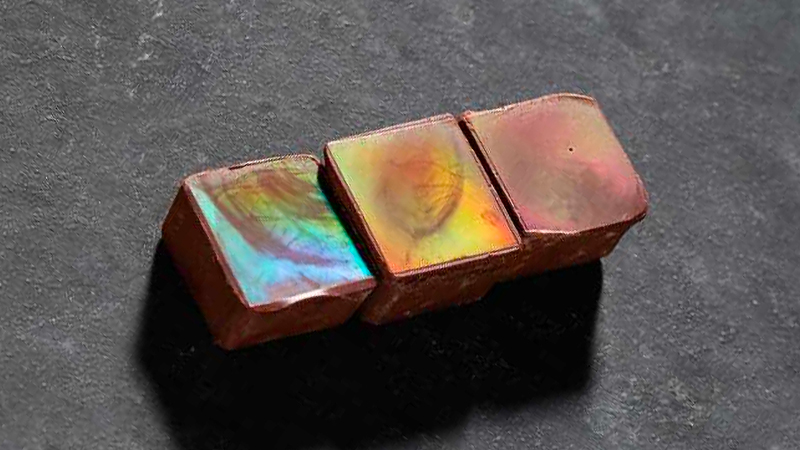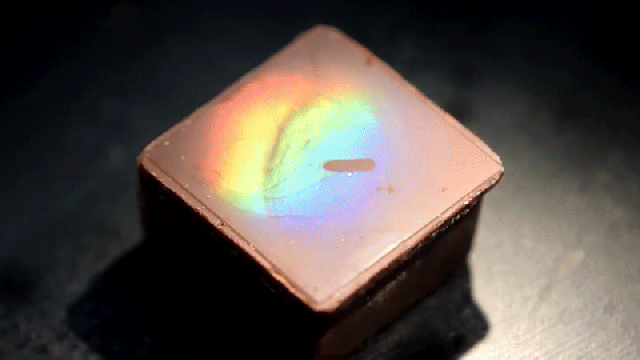Your average convenience store is a marketing warzone as snack makers compete to make their candy bars stand out amongst the competition. Skipping fancy wrappers or weird flavour combinations, researchers from colour-changing finish that doesn’t require any special ingredients or dyes.
The research, born from curiosity more than anything, was conducted by Patrick Rühs, Etienne Jeoffroy, and Henning Galinski who wondered if they could come up with a way to alter the natural brown colour of chocolate. Their earliest experiments involved coating chocolate in gold and titanium oxide which produced pronounced shades of yellow and blue, but mass-producing chocolate using that technique was complicated and impractical.
The real breakthrough came when the researchers connected with a materials science student named Anita Zingg who helped them develop a new technique that involves imprinting the outside of the chocolate with a specific pattern. After refining the process the team was able to produce chocolates with a colour-changing sheen reminiscent of a hologram, but without altering the flavour or texture of the chocolate itself.
The researchers now have a manufacturing process that can be scaled up for mass production and are already in talks with chocolate makers, in addition to spinning off their own company that will help commercialize their creation. As a result, the team isn’t eager to share the exact details on how their rainbow-coloured chocolate works, but they’ve provided enough clues to understand the basics by pointing out the process borrows some techniques from lizards.

The skin of a chameleon, like the wings of some butterflies, is able to produce brightly coloured iridescent effects as a result of their microscopic surface structures scattering light resulting in only certain wavelengths hitting the eye depending on the angle the creature is being looked at. Using modern manufacturing techniques a chocolate mould could be imprinted with a similar nano-scale pattern, be it lines or holes invisible to the human eye, that are transferred to the chocolate to produce a similar effect.
The rainbow colours presumably won’t last long once the chocolate is handled and its surface begins to melt, but otherwise, it’s a permanent effect that you can probably expect to see all over Instagram in the coming years once the technique and tools are available to amateur chefs.
